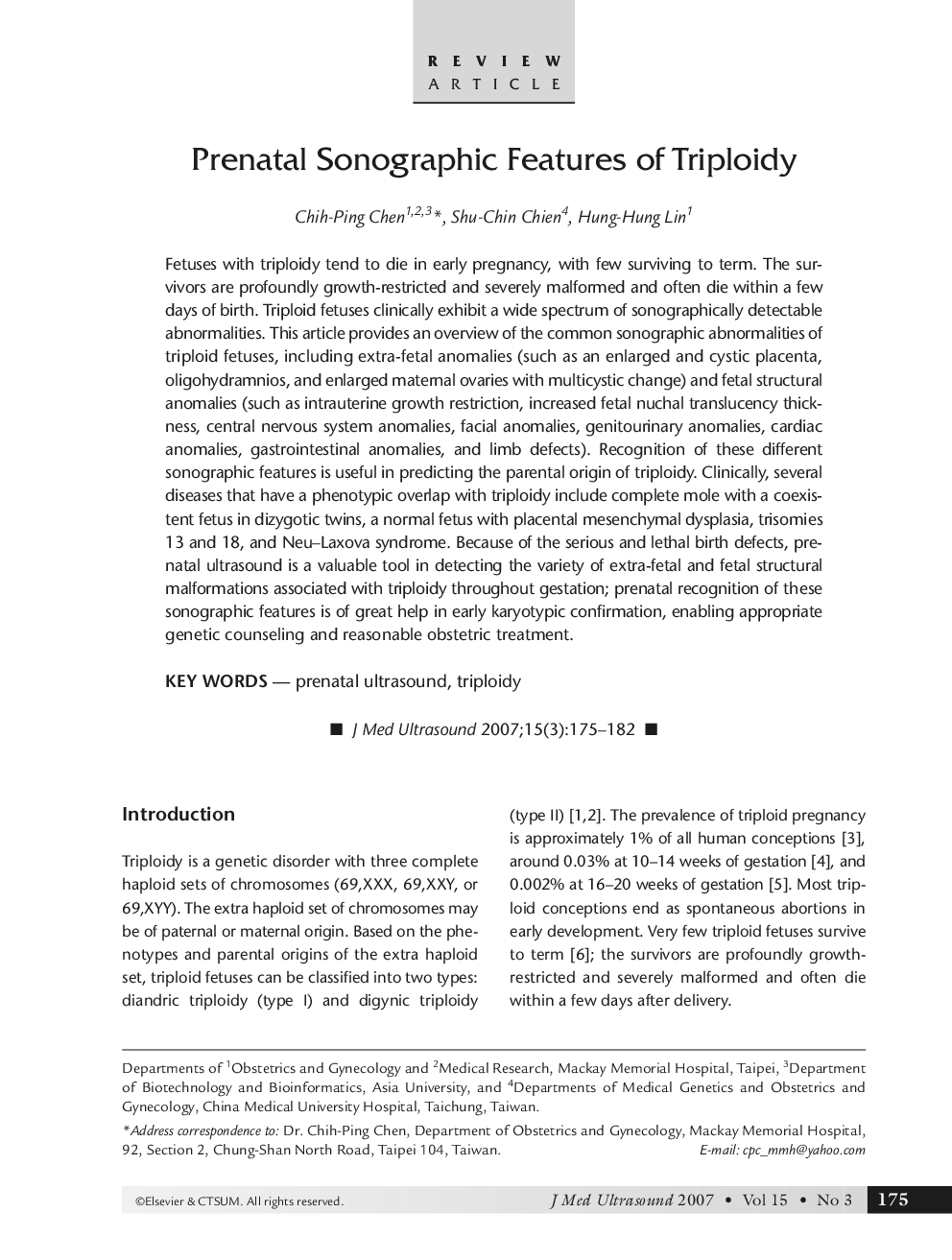| Article ID | Journal | Published Year | Pages | File Type |
|---|---|---|---|---|
| 4233191 | Journal of Medical Ultrasound | 2007 | 8 Pages |
Fetuses with triploidy tend to die in early pregnancy, with few surviving to term. The survivors are profoundly growth-restricted and severely malformed and often die within a few days of birth. Triploid fetuses clinically exhibit a wide spectrum of sonographically detectable abnormalities. This article provides an overview of the common sonographic abnormalities of triploid fetuses, including extra-fetal anomalies (such as an enlarged and cystic placenta, oligohydramnios, and enlarged maternal ovaries with multicystic change) and fetal structural anomalies (such as intrauterine growth restriction, increased fetal nuchal translucency thickness, central nervous system anomalies, facial anomalies, genitourinary anomalies, cardiac anomalies, gastrointestinal anomalies, and limb defects). Recognition of these different sonographic features is useful in predicting the parental origin of triploidy. Clinically, several diseases that have a phenotypic overlap with triploidy include complete mole with a coexistent fetus in dizygotic twins, a normal fetus with placental mesenchymal dysplasia, trisomies 13 and 18, and Neu-Laxova syndrome. Because of the serious and lethal birth defects, prenatal ultrasound is a valuable tool in detecting the variety of extra-fetal and fetal structural malformations associated with triploidy throughout gestation; prenatal recognition of these sonographic features is of great help in early karyotypic confirmation, enabling appropriate genetic counseling and reasonable obstetric treatment.
